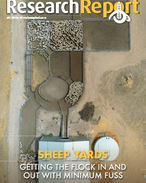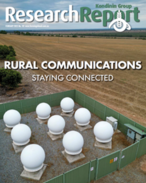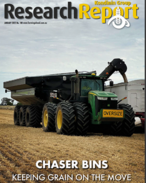This article is 5 years old. Images might not display.
Heliotrope contains toxins known as pyrrolizidine alkaloids that can damage the liver in many breeds of livestock and heliotrope is found particularly where there is bare ground such as on the roadsides, fallowed paddocks and in stubbles.
Livestock tend to avoid eating heliotrope if other feed is available, as heliotrope is relatively unpalatable.
Dr Jeff Cave, District Veterinary Officer with Agriculture Victoria, said in an Agriculture Victoria newsletter this week, while all animals are susceptible to heliotrope poisoning, sheep are primarily affected since they are most often grazed in the locations where heliotrope is commonly found.
"British breed and cross bred sheep are more commonly affected, more so than merinos due to their different grazing habits. The toxin found in heliotrope alters the liver's metabolism for copper causing the liver to hold abnormally high levels of copper," Dr Cave said in the newsletter.
The liver damage caused by heliotrope is cumulative. In other words, the liver damage increases each time an animal eats heliotrope.
When the liver becomes saturated with copper there is a rapid release of copper leading to kidney failure and death due to a condition commonly known as ‘yellows'.
Dr Cave noted yellows usually does not occur until sheep have been exposed to heliotrope for more than one summer.
Yellows often occurs after the exposure to heliotrope has gone when sheep are later put on lush pastures which are rich in copper, such as clover.
Although other livestock are susceptible to the effects of heliotrope, cattle and horses are more susceptible to the effects of the toxin found in heliotrope than are sheep.
Unlike sheep, the signs of liver damage associated with heliotrope poisoning often occur soon after cattle and horses are exposed to heliotrope and large losses of stock occasionally occur.
For more information on heliotrope toxicity in sheep and cattle go to Agriculture Victoria website or contact your local veterinarian.






















